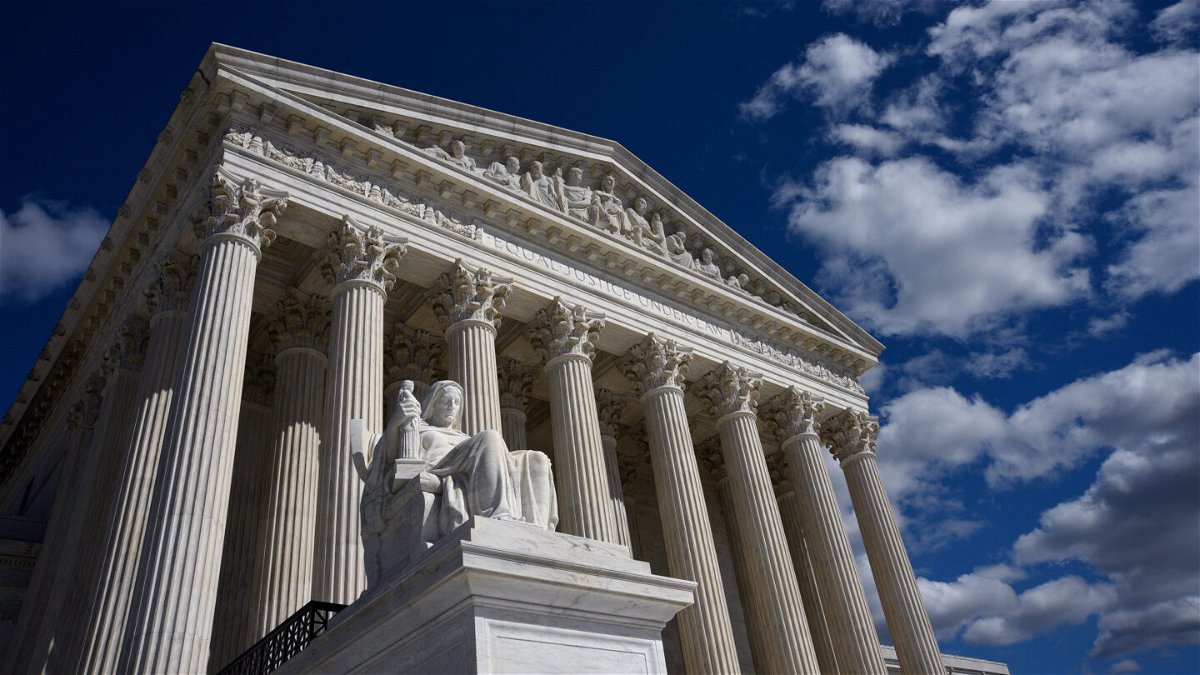Supreme Court sides with police officers in two qualified immunity cases

In two unsigned opinions
By Ariane de Vogue, CNN Supreme Court Reporter
In two unsigned opinions Monday, the Supreme Court ruled in favor of police officers seeking qualified immunity from allegations of excessive force.
In both cases, the justices overturned lower court decisions that went against the officers.
The rulings — and the fact that no justice publicly dissented — suggests that the court is not willing, at least for now, to radically transform how it considers qualified immunity cases.
Qualified immunity is a legal doctrine, developed by the courts, that shields law enforcement from liability for constitutional violations including allegations of excessive force. In recent years, legal scholars, lawmakers and judges have criticized the doctrine, arguing that it is not grounded in the proper legal authorities and too often shields officials from accountability. Calls for the court to take a substantial new look at the doctrine intensified after the killing of George Floyd in 2020.
Under existing precedent, an officer is not liable, even if he or she violates the Constitution, unless it was “clearly established” by prior cases that the conduct at issue was unconstitutional. Critics say that bar is too high and forces those claiming excessive force to search for a prior case with nearly identical facts.
Last term, there were two instances where the court wiped away lower court opinions that had granted qualified immunity to government officials, leading some to believe the court was moving in a new direction to chip away at the doctrine.
But on Monday, the justices made clear that last term’s cases were outliers, and that the traditional framework could stand.
“Monday’s cases are further evidence that the Supreme Court is not going to reconsider the fundamentals of the doctrine and the justices are reaffirming the general idea that in most cases plaintiffs still need to find a nearly identical precedent to make their case,” said Jay Schweikert, a research fellow the Cato Institute who studies the issue.
“This means that until and unless Congress addresses qualified immunity, public officials can continue to violate people’s rights with impunity” Schweikert said.
One of the opinions released Monday stemmed from a dispute in California. Police officer Daniel Rivas-Villegas responded to a 911 call reporting that a woman and her children feared that the woman’s boyfriend, Ramon Cortesluna, was going to hurt them. The call came from a crying 12-year-old girl who said that she and her mother and sister had shut themselves in a room and that Cortesluna was trying to hurt them with a chainsaw.
When the officers came to the house, Cortesluna emerged as directed. As he walked toward the officers, Rivas-Villegas eventually straddled Cortesluna and found a knife in his pocket. He placed his knee on the left side of Cortesluna’s back near where the knife was and raised both his arms behind his back. Rivas-Villegas was in the position for approximately eight seconds.
Cortesluna sued, arguing that Rivas-Villegas had used excessive force.
A court of appeals ruled against the officer because “existing precedent” put him on notice that his conduct constituted excessive force. The Supreme Court Monday reversed the decision, holding that there were factual distinctions between the precedent and the case at hand.
The second case, out of Oklahoma, concerned Dominic Rollice, whose ex-wife called 911 because Rollice was intoxicated in her garage and wouldn’t leave. Officers Josh Girdner, Chase Reed and Brandon Vick responded. They met the wife at the front of the garage and began speaking to Rollice through the doorway. Police bodycam video captured Rollice, still conversing with the officers as he turned to walk to an area where his tools were hanging. He grabbed a hammer and faced the officers who asked him to drop it while drawing their guns.
Instead, he raised it behind his back as if he was about to throw it at them and charge. In response, the officers fired their weapons and killed him.
Rollice’s estate filed suit. A panel of judges on the 10th US Circuit Court of Appeals ruled against the officers, holding in part that they had cornered him “recklessly.” The court pointed to several cases it said that clearly established that the conduct was unlawful. The Supreme Court reversed again holding that “on this record” the officers did not violate any clearly established law.
The-CNN-Wire
™ & © 2021 Cable News Network, Inc., a WarnerMedia Company. All rights reserved.